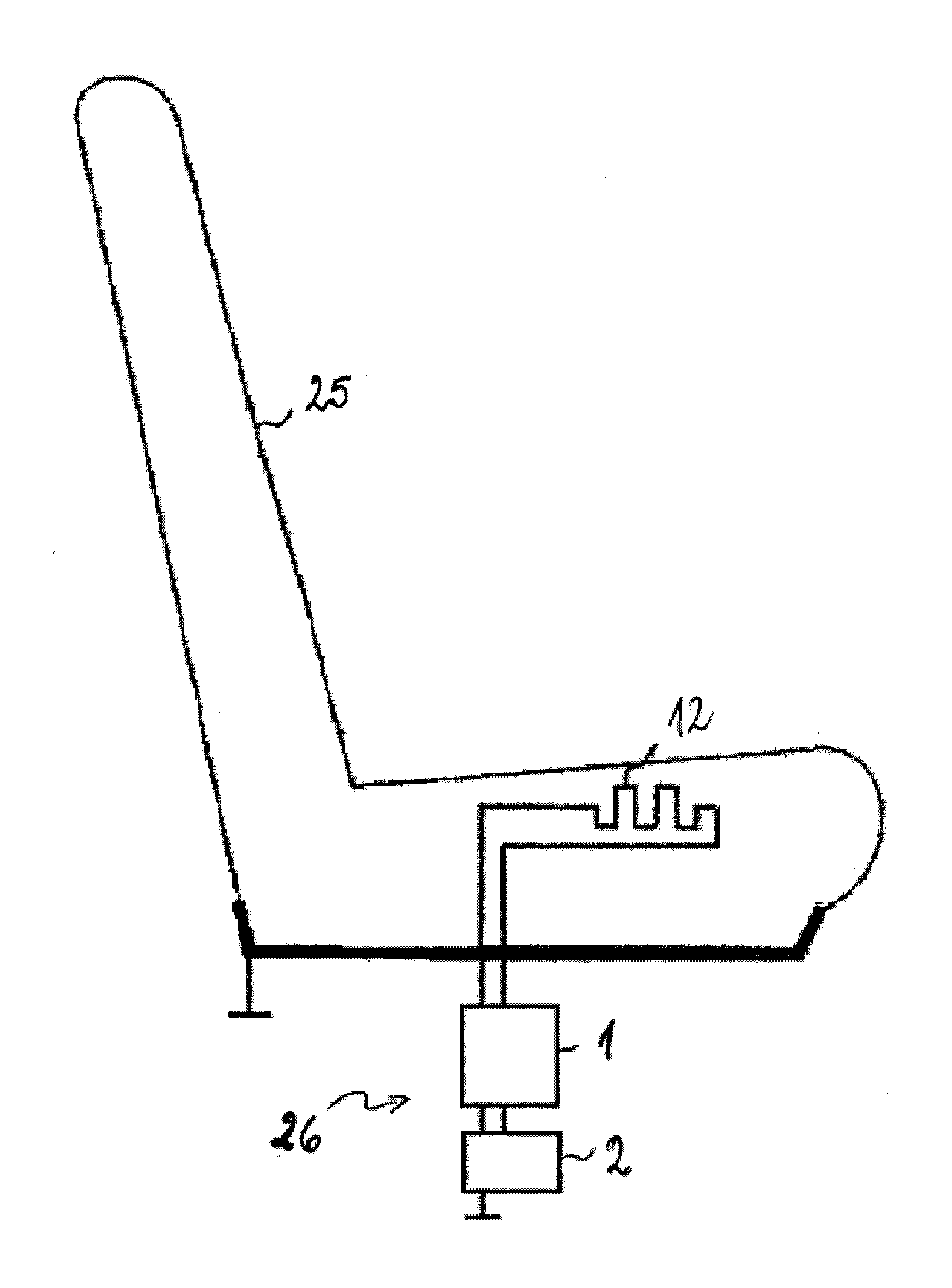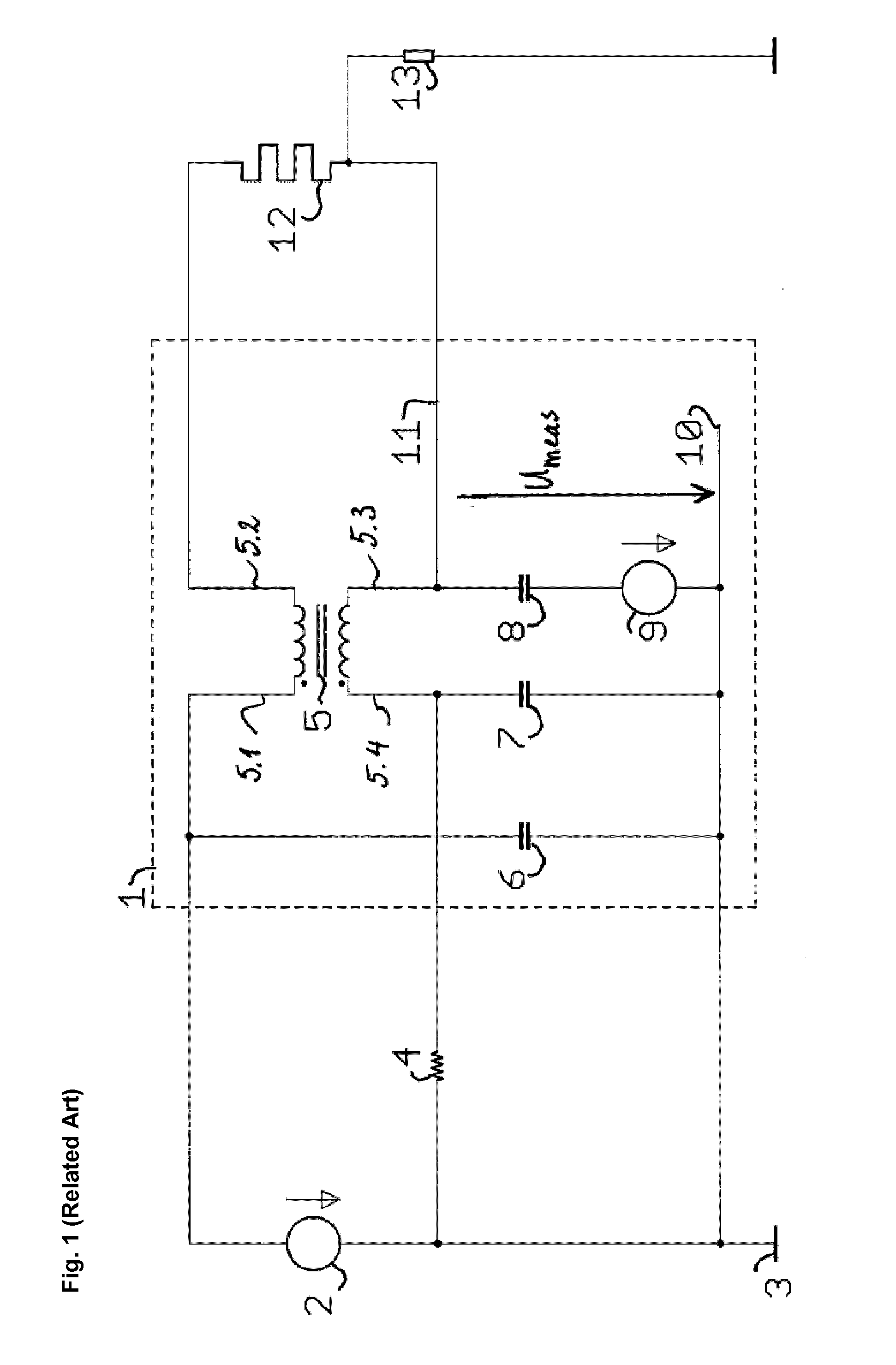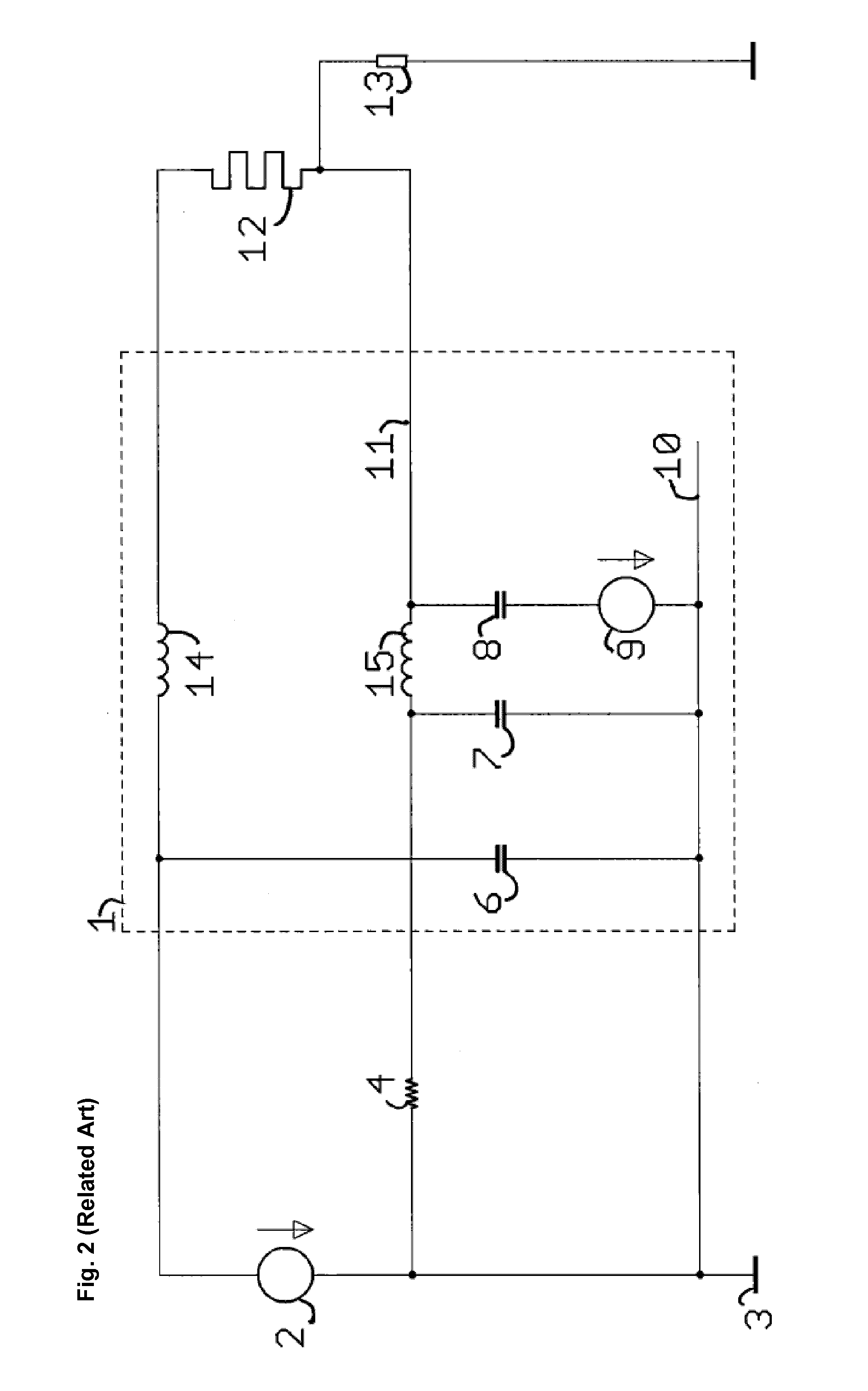Capacitive sensor configured for using heating element as antenna electrode
- Summary
- Abstract
- Description
- Claims
- Application Information
AI Technical Summary
Benefits of technology
Problems solved by technology
Method used
Image
Examples
second embodiment
[0039]FIG. 5 shows a combined heater and capacitive sensor in accordance with the invention. The capacitive sensor 1 uses basically the same measurement principle as the capacitive sensor of FIG. 3. However, the measurement node (signal input 17.2 of transimpedance amplifier 17) is inductively coupled to the node 11 and thus to the heating element 12 via the third winding of the common mode choke 5. The advantages of the galvanic separation between the measurement node and the heating element are those explained already with respect to FIG. 4.
[0040]The inductive coupling through the third winding of the common mode choke yields an additional advantage. As briefly indicated hereinabove, in an automotive application, an electronic control module is required to be immune against so-called ‘bulk current injection’. The BCI test simulates the influence of electromagnetic fields on the behavior of the electronic control module. A high frequency current is injected into the wiring with a s...
seventh embodiment
[0046]A seventh preferred embodiment of a capacitive sensor according to the invention is shown in FIG. 11. The embodiment of FIG. 11 largely corresponds to the embodiment of FIG. 9 but additionally comprises an amplifier 21 in order to adjust the amplitude of the AC voltage on the shield conductor 22.3. It will thus be appreciated that in the invention the transformer ratio between the third and the first or second winding may be different from one.
[0047]The eighth preferred embodiment of a capacitive sensor according to the invention shown in FIG. 11 combines all the features of the embodiments of FIGS. 10 and 11.
[0048]It is worthwhile noting that in the embodiments of FIGS. 11 and 12, the amplifier 10 could be replaced by an appropriate transformer.
[0049]FIG. 13 shows a vehicle seat 25 equipped with a combined seat heating and capacitive occupant sensing system 26. FIG. 14 shows a steering wheel 28 equipped with a combined heating and capacitive hands-on or hands-off sensing syst...
PUM
 Login to View More
Login to View More Abstract
Description
Claims
Application Information
 Login to View More
Login to View More - R&D
- Intellectual Property
- Life Sciences
- Materials
- Tech Scout
- Unparalleled Data Quality
- Higher Quality Content
- 60% Fewer Hallucinations
Browse by: Latest US Patents, China's latest patents, Technical Efficacy Thesaurus, Application Domain, Technology Topic, Popular Technical Reports.
© 2025 PatSnap. All rights reserved.Legal|Privacy policy|Modern Slavery Act Transparency Statement|Sitemap|About US| Contact US: help@patsnap.com



